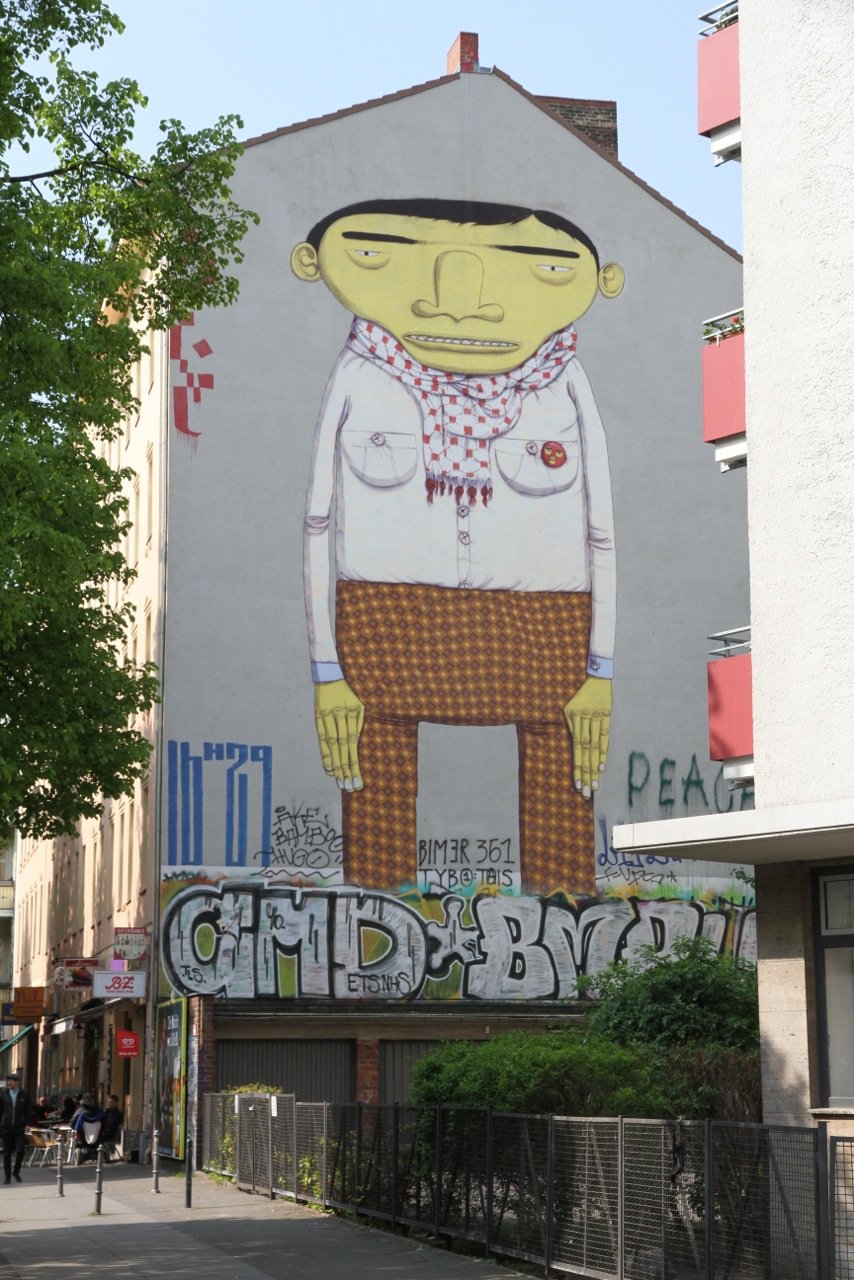
The birth of Berlin’s street art scene can be traced back to 1961 when the Soviet Union erected the Berlin wall, separating East Germany from West Germany. Due to the symbolic significance of the wall as a divisive medium, it became the obvious place for the citizens of Berlin to express their opinions and frustrations on a whole range of issues. On the other hand, it was also seen as an exceptionally unattractive eyesore that the people of Berlin felt compelled to do something about. During the Cold War, the West side of the Berlin wall was completely covered in painting, unlike the East side of the wall which remained blank, because people in East Berlin were unable to get close enough to the wall to paint on it. Interestingly, since the wall fell in 1989, a lot of new art was added to the East side of wall in the 1990’s, allowing viewers to trace the historical and political change that occurred in Europe by comparing and contrasting the different themes depicted on either side of the wall.
Today, the streets of Berlin boast some of the best street art in the world. Street artists and graffiti painters from around the globe utilize its buildings as a canvas, creating a uniquely colorful landscape. Take a look:
Mural by Os Gêmeos – Schlesisches Tor/Oppelner Strasse
Image: Hendrik Hansson
Born in 1974, identical Brazilian twins Otavio and Gustavo Pandolfo are best known for their large-scale installations and murals depicting strangely dressed and unusually proportioned, yellow-skinned figures. Influenced primarily by their upbringing in São Paolo, they first started developing their recognizable style at the age of twelve. In 2005 their exhibition at Deitch Projects in New York attracted considerable attention. They have since participated in solo and group exhibitions in New York, Los Angeles and San Francisco, and internationally in Europe, South America and Asia. Os Gêmeos were included in The Art in the Streets exhibition at the Museum of Contemporary Art, Los Angeles in 2011 and at the ICA, Boston in 2012.
Mural by ROA – Oranienstrasse/Skalitzer Strasse
Image: Hendrik Hansson
A native of Ghent, Belgium, ROA is known for large-scale murals depicting wild or urban animals and birds that are native to the country or region that the paintings appear in. The paintings are exclusively drawn in a conservative black, white or gray color palette, and are painted mostly with aerosol spray cans. ROA deals extensively with the themes of death and decay, routinely depicting dead or rotting animal carcasses reflecting the transient nature of human life and of street art which is inherently impermanent due to it’s exposure to the elements. The mural in Oranienstrasse was commissioned by Skalitzers Contemporary Art in 2011 for the exhibition Transit.
Cosmonaut Mural by Victor Ash – Mariannenstrasse (Kreuzberg) Image: Hendrik Hansson
The Cosmonaut looks over the residents of Kreuzberg. The 22x14m Mural was painted in 2007 by Victor Ash and is considered to be the largest stencil drawing in the world. Like much of Ash’s work the Cosmonaut explores contrasts between the subject matter and the environment that it inhabits. The unexpected sight of an unmissable, massive, weightless astronaut immediately leaves a lasting impression on pedestrians, a gift to the passers by, fulfilling the artists’ ambition to contribute to the democratization of art. Ash was born in Portugal in 1968 and raised in France. He currently lives and works in Copenhagen, Denmark.
JR Mural – Prenzlauer Allee
Image: Hendrik Hansson
The JR mural was part of the French street artist’s Wrinkles of the City project, completed in April 2013. JR posted gigantic black and white portrait photographs in 15 locations throughout the city. JR chose to portray elderly people to illustrate how they and the city have lived through change and flux. One year after they were completed, only few of the murals still remain intact, most are shredded or weathered, barely recognizable, reflecting the cycle of constant change and upheaval that urban landscapes experience. JR was born in France in 1983, he lives in Paris and New York and is represented by Galerie Perrotin. The artist has had solo exhibitions in USA, Asia and Europe including the Contemporary Arts Center, Cincinnati and The Watari Museum, Tokyo. His current solo show at the Museum Frieder Burda, Baden Baden can be viewed until June 2014.
Blu Mural – Curvystrasse/Schlesische Strasse Image: Hendrik Hansson
Italian street artist Blu painted this large scale two-piece mural to engender a political dialogue between the idealogical differences of the East and the West. To understand this mural one must understand the history of the location where it is painted. The mural is located in the immediate proximity of one of 12 former border checkpoints between East and West Germany. The first work depicts a man adjusting his necktie, wearing two gold watches connected by a chain, like handcuffs. The second mural depicts two figures attempting to de-mask each other with one hand, whilst using the fingers of the other hand to form an ‘E’ (for East) and a ‘W’ (for West).